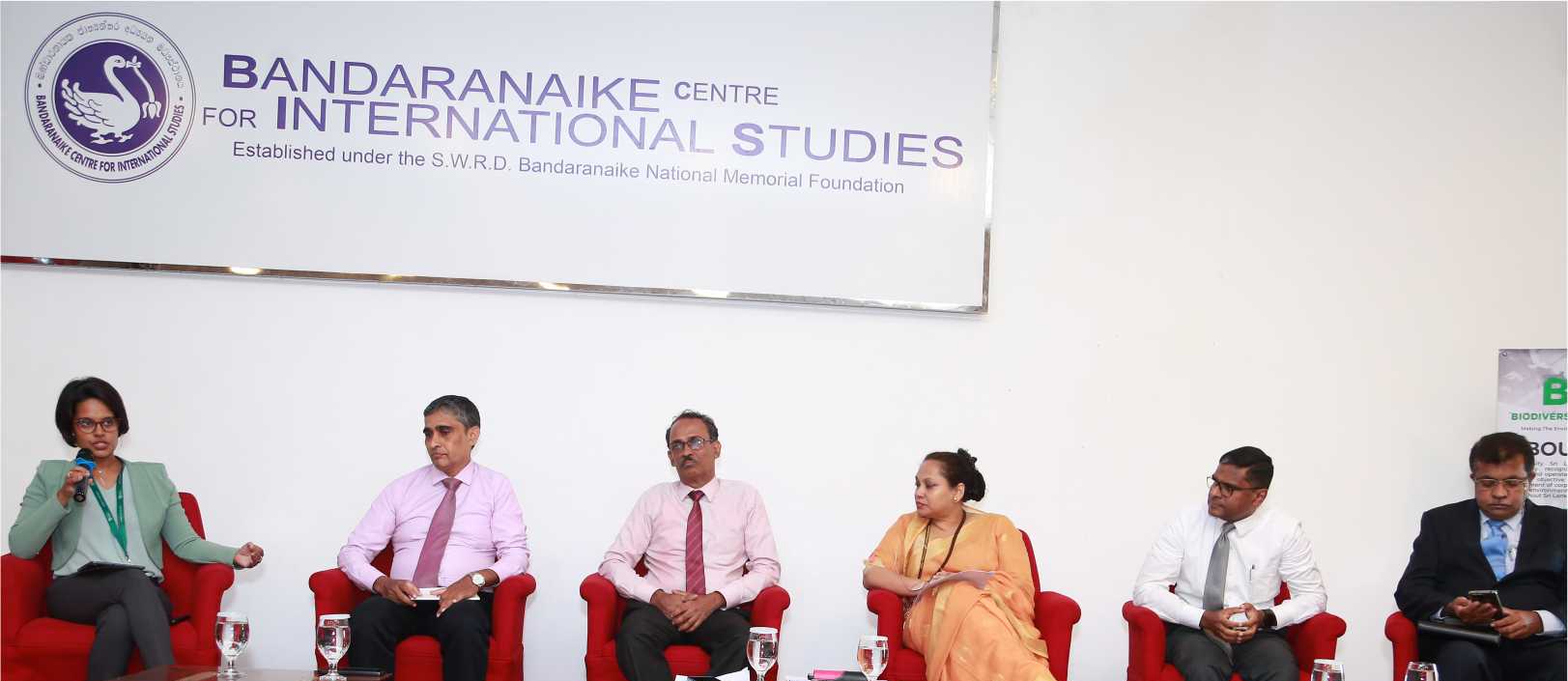
Climate Risks and Green Finance
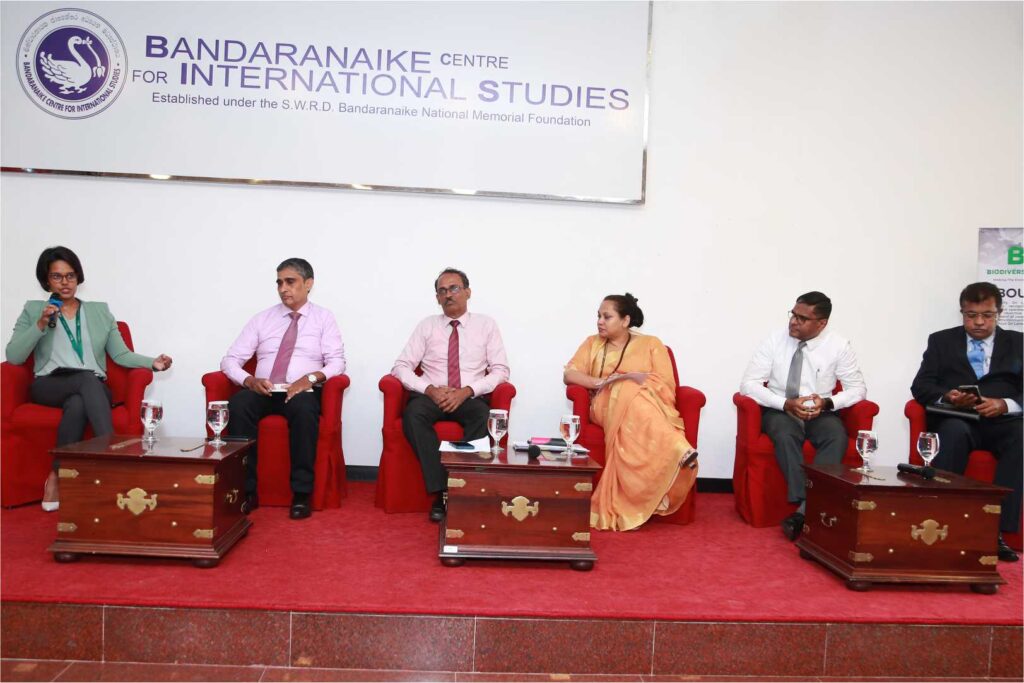
The second segment of Biodiversity Sri Lanka’s Annual Technical Sessions, titled “Climate Risks & Green Finance: Exploring the Intersection”, brought to light the growing convergence between climate change impacts and the financial sector. As climate risks escalate, businesses, particularly in Sri Lanka, must assess how these risks affect their operations, while also exploring green finance as a tool to support climate resilience and sustainable development.
Session Overview
This session focused on the growing intersection of climate risks and green finance, and the need for Sri Lankan businesses to integrate climate resilience into their strategies. Green finance was highlighted as a key tool for funding sustainable projects, enabling companies to reduce their carbon footprint. The private sector, especially banks, was recognised for its crucial role in driving the low-carbon transition through strategic investments.
Resource Persons
The session featured distinguished experts, with Mr Ranga Pallewala delivering the Keynote Address. The interesting panel discussion was moderated by General Manager – Group ESG of Hayleys PLC Ms Prashani Illangasekera. The panelists from both the private sector and state sector Director General – Sustainable Development Council Ms Chamindry Saparamadu, Director Climate Change of the Ministry of Environment Mr Leel Randeni, Vice President (Sustainability & Consulting) of DFCC Bank PLC/DFCC Consulting (Pvt) Mr Nalin Karunatileka, Chief Executive Officer of the National Cleaner Production Center Mr Samantha Kumarasena, and Industrial Development Officer of the Ministry of Industries Mr Lalith Wasantha. The panelists discussed the nexus between climate risks and green finance, global trends in green financing, and the steps Sri Lankan companies need to take to access green finance.
Key themes from the panel discussion:
The panel discussion following the keynote address brought together experts from both the financial and environmental sectors to discuss practical strategies for managing climate risks and advancing green finance in Sri Lanka. Key points from the discussion included:
- Regulation and Policy Support: Panelists emphasised the growing regulatory push for climate-related financial disclosures. Governments and regulators are increasingly holding businesses accountable for their climate impact, which is expected to lead to better risk management and transparency. Sri Lanka is no exception, with evolving policies encouraging companies to align with global sustainability standards.
- Investment in Green Projects: Sri Lanka is well-positioned to benefit from green finance, particularly in areas like renewable energy, eco-tourism, and climate-resilient agriculture. These sectors not only offer financial returns but also help the country meet its climate goals. The panel highlighted the need for increased investment in these areas to drive sustainable economic growth.
- Long-term Business Resilience: Incorporating climate risks into corporate and financial strategies is vital for building long-term resilience. The panel discussed how companies that fail to account for climate risks may face financial instability, while those that proactively invest in sustainable practices will be better equipped to navigate future challenges.
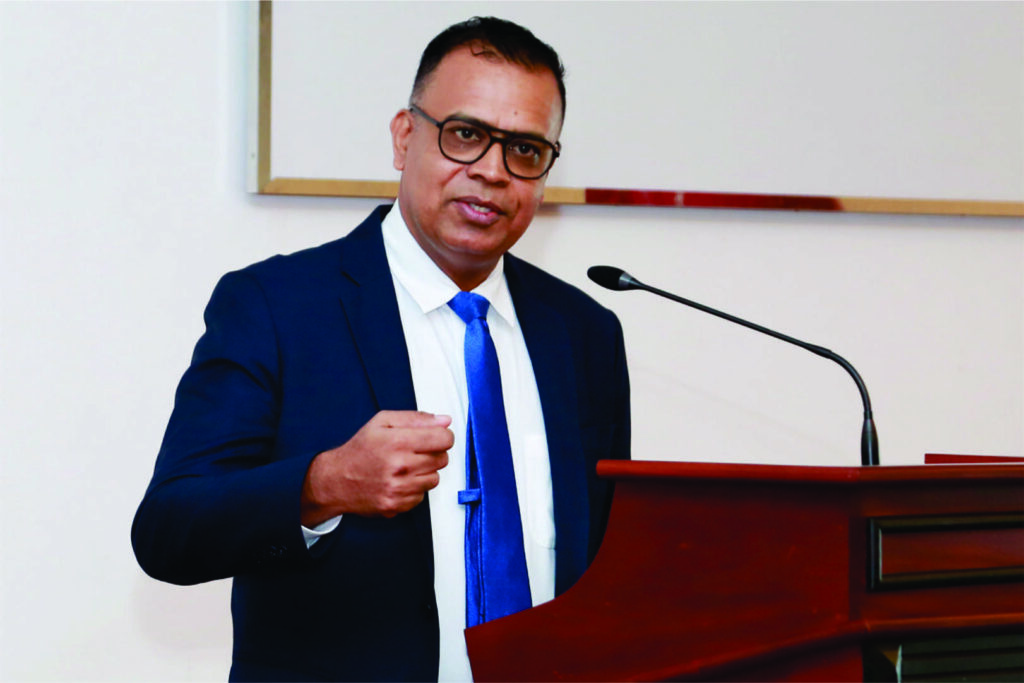
Opportunities to Access Green Finance
In this session, Mr. Ranga Pallewala, a global expert on green finance, delivered a thought-provoking keynote address. He outlined how climate change is not only an environmental challenge but also a significant financial risk, particularly for industries reliant on natural resources. His speech underscored the importance of integrating climate considerations into financial decision-making and highlighted the potential of green finance to fund climate-friendly initiatives. Here are the key takeaways from his address:
Financial institutions and businesses have a crucial role in promoting climate resilience. By financing green initiatives, banks and investors can support sustainable development while protecting their own long-term financial interests. The need for businesses to move away from carbon-intensive industries and toward climate-friendly investments was also highlighted.
Climate risks, including extreme weather events and rising temperatures, are affecting business operations in Sri Lanka. Industries such as agriculture, tourism, and real estate in Sri Lanka are particularly vulnerable. Mr. Pallewala stressed that failing to account for these risks in financial planning could result in severe economic consequences.
Green finance, including tools like green bonds and sustainability-linked loans, offers companies the chance to secure funding for projects that promote environmental sustainability. This includes investments in renewable energy, sustainable agriculture, and projects aimed at reducing carbon emissions. Mr. Pallewala emphasized that green finance is not just a niche market—it is becoming central to the future of sustainable business.
Panel Discussion Highlights
Climate change poses financial risks to key industries in Sri Lanka, such as agriculture, fisheries, and tourism. Companies must integrate climate resilience into their strategies to safeguard against economic disruptions caused by extreme weather and environmental changes.
Green finance offers local businesses the opportunity to invest in sustainable projects like renewable energy, waste management, and eco-friendly agriculture. By leveraging options such as green bonds, Sri Lankan companies can achieve both environmental protection and economic growth.
The private sector in Sri Lanka, particularly banks and financial institutions, has a vital role in promoting a low-carbon economy. By funding green projects, they can lead the transition to sustainable practices while ensuring long-term profitability.
As regulatory frameworks evolve in Sri Lanka, businesses must enhance transparency in disclosing their environmental impact. Adapting to these climate-related regulations will help companies align with national sustainability goals and maintain market competitiveness.
Call to Action
Segment 2 of the Annual Technical Sessions highlighted the urgent need for businesses to incorporate climate risks into their financial planning and leverage the opportunities presented by green finance. With insightful contributions from Mr. Ranga Pallewala and a dynamic panel discussion, the session underscored that addressing climate risks is not only critical for environmental sustainability but also for long-term business resilience. By embracing green finance, Sri Lankan companies can lead the way in building a more sustainable and climate-resilient future.
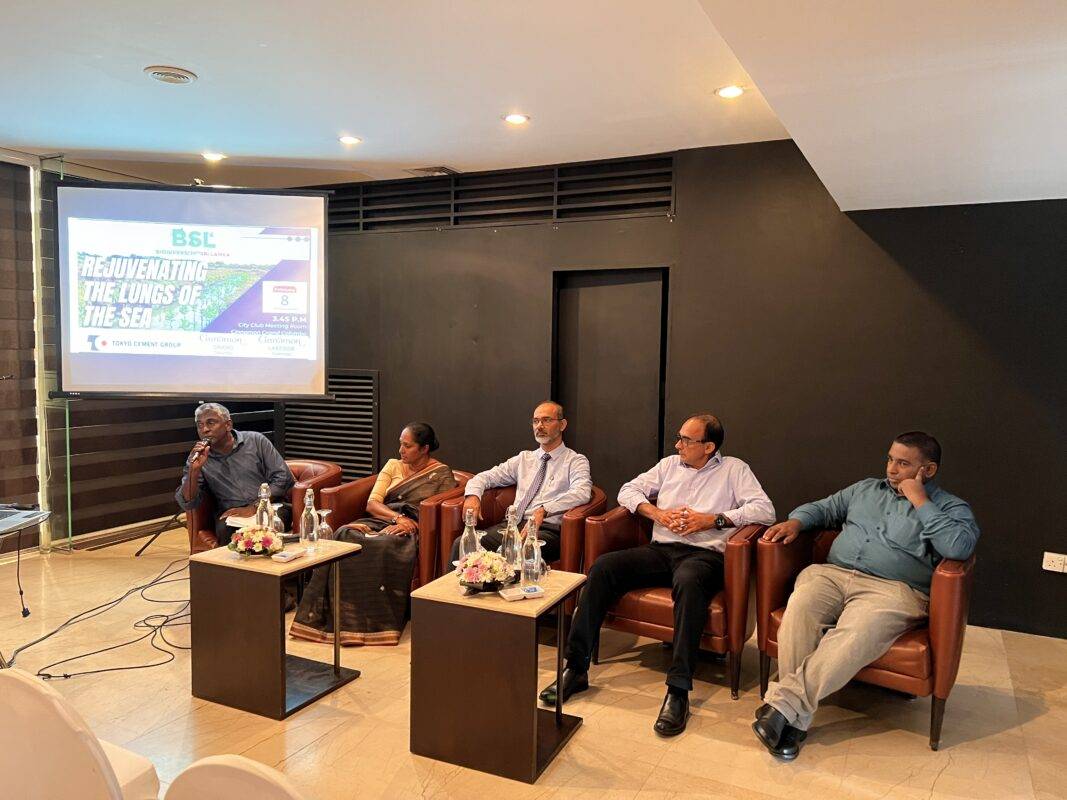
Biodiversity Sri Lanka celebrates World Wetlands Day, 2023 ‘Rejuvenating the Lungs of the Sea
Biodiversity Sri Lanka in partnership with Tokyo Cement Company (Lanka) PLC and Cinnamon Hotels and Resorts commemorated World Wetlands Day, 2023 ‘Rejuvenating the Lungs of the Sea’ on the 8th of February, 2023 at the Hotel Cinnamon Grand from 3.30 to 5.30 p.m.
A wetland is an area of land covered by salt or fresh water, either seasonally or permanently. It has its own vegetation types and rich biodiversity, along with its own distinct ecosystem. Wetlands provide shelter to a wide array of biota, including water birds, mammals, fish, and insects, and also act as pit stops for migratory birds.
Wetlands also act as natural filters, commonly referred to as the ‘kidneys of the Earth’, trapping pollutants such as heavy metals and excessive nitrogen and phosphorous. They also act as a source of food for animals and human beings, hydrologically regulate erosion and flood and drought conditions and enable carbon sequestration and climate regulation. These systems store a total of 11.52 pentagrams of carbon, which is equivalent to roughly four years of annual carbon emissions by the country.
Carbon sequestration rates of coastal wetlands and freshwater wetlands are higher than terrestrial forests. Waterlogging soils limit oxygen transmission and create an anaerobic condition. This condition slows down the decomposition rate of organic matter, leading to the build-up and storage of large amounts of organic carbon in wetland sediments. The hydrological connection between waterways and their associated floodplains plays an important role in terms of the exchange of carbon and nutrients (i.e., wetlands can trap carbon-rich sediments from catchments, but may also disperse carbon through water flow into floodplains)
From the existing 44.5 ha of degraded mangrove forest patches within the Anavilundawa wetland sanctuary, the Department of Wildlife Conservation (DWC) has been guiding Biodiversity Sri Lanka since February 2022 in initially restoring up to 10.0 ha, using accepted scientific principles, with the Wayamba University of Sri Lanka playing the role of an expert advisor with respect to the science component of the project. Advice on establishing the biodiversity, soil, and hydrology baseline of the land plots, providing technical inputs for land preparation and establishing and maintaining field mangrove nurseries, planting mangroves and maintaining mangrove fields, and controlling potential pests and diseases on mangrove plants will be provided together with continued guidance and support for periodic data gathering and monitoring. Spanning an initial period of five years, with financial resources from its Membership, the first two years will focus on planning, forging community partnerships, land preparation, nursery establishment, and planting activities.
In celebration of the completion of a productive year of BSL public-private partnership ‘LIFE to Our Mangroves’, the wetlands day event was held, with the participation of distinguished speakers Prof. Sevvandi Jayakody, Senior Lecturer, Wayamba University, Chitral Jayatilake, Head of Eco-Tourism, Cinnamon Hotels and Mr. Salinda Kandapola, Corporate Sustainability Manager, Tokyo Cement Company (Lanka) PLC.
The first presentation of the event was done by Mr. Chitral Jayatilake, where he spoke about the sustainability projects carried out by Cinnamon Hotels. He highlighted the various wildlife conservation initiatives carried out by Cinnamon Wild Yala and Cinnamon Lodge Habarana in particular. Mr. Jayathilake also talked about the Eco-Tourism based approaches carried out by Cinnamon hotels.
Prof. Sevvandi Jayakody made a detailed presentation on the Importance of Mangrove ecosystems and progression at the Anawilundawa mangrove restoration site since the start of the project, from the obstacles they faced whilst selecting the site to the current status. Professor Jayakody indicated the research activities happening on the site, including floral and faunal surveys and water and soil quality analyses. She also highlighted the community involvement in the project stressing the support given by the neighboring villagers in seed collection, nursery preparation, etc.
Mr. Kandapola highlighted the Mangrove Re-planting Project in Cod Bay, Trincomalee – a project carried out by Tokyo Cement Company (Lanka) PLC, since 2012. He elaborated on details from the start of the project, how it was carried out from nursery preparation, indicating the species of Mangroves that were planted in the site and progression during the past 10 years (2012 to 2022). He also talked about the faunal species that were found on the site and the current status of the area restored.
A special panel discussion was held with the participation of distinguished panelists Prof. Sevvandi Jayakody, Dr. Shamen Vidanage, Senior Lecturer, University of Kelaniya, Mr. Graham Marshall, Chair- Marine Sub Committee, Wildlife & Nature Protection Society, and Mr. Sanith de Silva Wijeyeratne, Director/CEO, The Climate & Conservation Consortium. The panel discussion was moderated by Prof. Devaka Weerakoon, Senior Professor in Zoology & Environmental Sciences, University of Colombo. Following the panel discussion, an open discussion was held with audience participation.
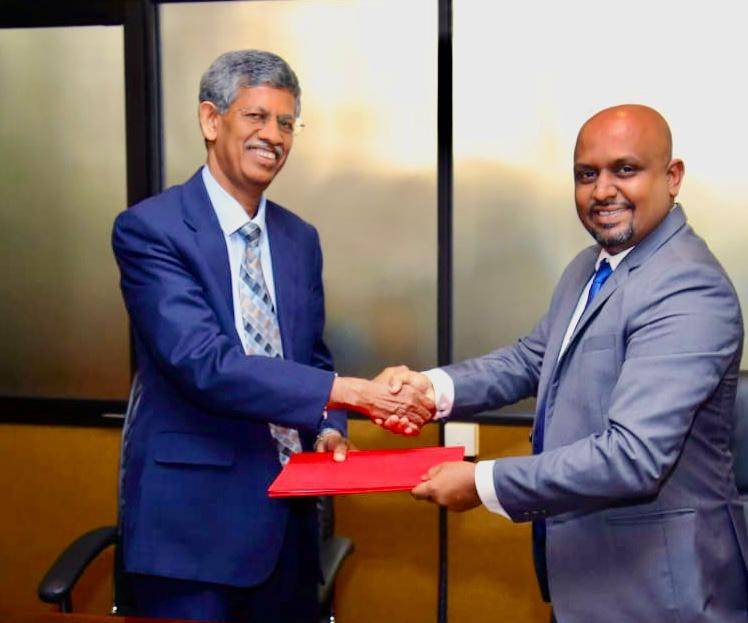
A Memorandum of Understanding (MoU) signed between the CCC and the CEA on the EPR Online Reporting Portal
A Memorandum of Understanding (MoU) was recently signed between the Ceylon Chamber of Commerce (CCC) and the Central Environmental Authority (CEA) on managing the EPR On-line Reporting Portal on the 18th of February 2023 at the CEA premises. The signing of the MoU was witnessed by Mr. Supun S. Pathirage, Chairman of the Central Environmental Authority (CEA), and Mr. Manjula De Silva, Secretary General/CEO of the Ceylon Chamber of Commerce. This MoU cements the relationship between the Parties for the handling of the EPR Reporting System.
The Online Plastic Waste Reporting Portal for the Extended Producer Responsibility (EPR) Obligatory Companies was developed by Virtusa (Pvt) Ltd. with funding from the Clean Cities Blue (CCBO) initiative of the United States Agency for International Development (USAID). The Ceylon Chamber and Biodiversity Sri Lanka (BSL) officially inaugurated the EPR system on June 16, 2022, for the environmentally responsible management of plastic waste. To access the online portal, visit www.epr.lk
The initiative aims to increase plastic waste collection and recycling to minimize plastic pollution at the national level. The online reporting portal has been endorsed by the Ministry of Environment (MoE) and the Central Environmental Authority (CEA) and welcomed by the private sector.
On January 26, 2023, the project conducted a meeting with the CEA officials who are handling the online portal and with the Virtusa team. The main objective of this meeting is to discuss some technical difficulties and give some technical instructions to the employees of CEA who are handling the EPR Portal. The training was led with the assistance of Virtusa.
CEA convened a meeting with PET and HIPS Consortium members to inform them that CEA has taken over the responsibility of managing the Online Reporting System and that they should report on manufacturing and collection figures into the Portal beginning in January 2022. The CEA intends for EPR-obligatory companies to begin reporting annual plastic consumption and collecting post-consumer plastic in January 2023. The initial phase will focus on two types of plastics, namely, Polyethylene Terephthalate (PET) and High Impact Polystyrene (HIPS) packaging. The outcome of voluntary EPR implementation will be documented to draw lessons that can be applied to a mandatory collection and reporting system in the future. The project and the CEA looked forward to any positive steps taken toward moving the national EPR process forward.
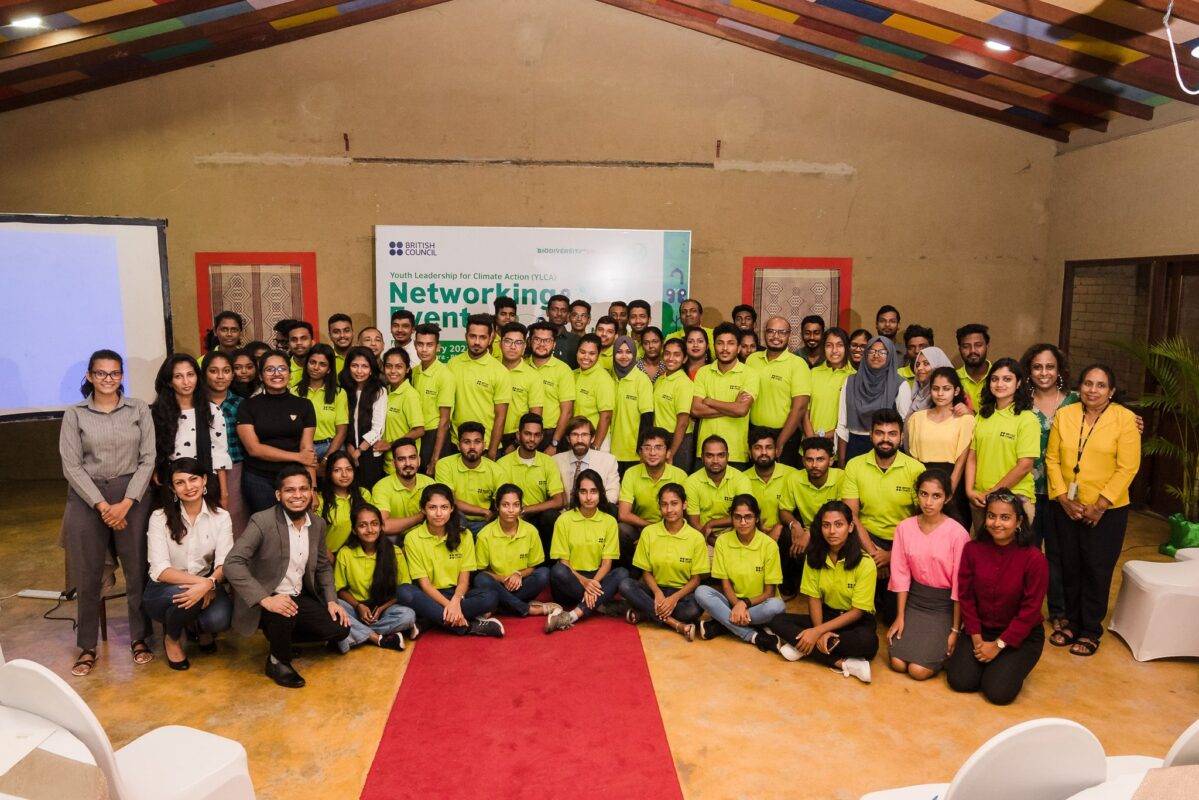
Progressing with Youth Leadership for Climate Action (YLCA)
Using British Council funds, Biodiversity Sri Lanka (BSL) is making progress on an initiative called Youth Leadership for Climate Action (YLCA), targeting young people living in the Colombo District. The programme intends to develop these young people into community leaders in climate action, through a series of residential training programs. Either individually or in groups, the candidates are expected to undertake a community intervention supporting climate action. We believe that through this programme, the young candidates will gain knowledge and skills to address local climate problems. The selected youth were provided with the chance to broaden their networks with other district YLCA teams recently at Mihilaka Medura, BMICH. Seventy-five young people from the Colombo, Gampaha, and Kandy districts attended this event.
After successfully completing the three training segments, which covered the journey of climate actions, the basics of project management, fundraising, environmental/social entrepreneurship, Equality, Diversity, and Inclusion (EDI), safeguarding and gender sensitivity communicating and networking through social media, etc., the candidates developed project proposals for community interventions climate issues. They will now put themselves into action. In presenting these community intervention ideas, the British Council created a platform in collaboration with BSL and WNPS. This serves as a networking opportunity.
Through a poster presentation at the event, the youth had the opportunity to share their intervention ideas with other youth and guests, network with them, and share their experiences. Additionally, it gave them the chance to network with well-known figures in fields connected to sustainability and the environment.
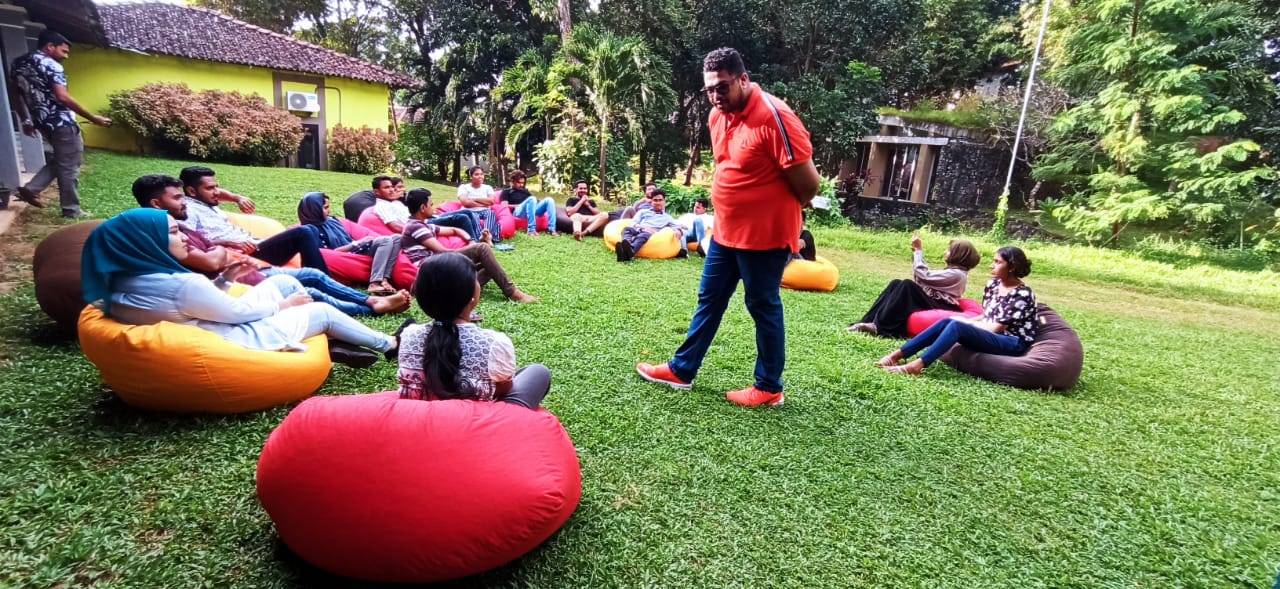
Working With Budding Youth Action Activists
24 candidates from the Colombo district were selected and trained to be leaders in climate action under the auspices of the Youth Leadership for Climate Action (YLCA) Project, funded by the British Council and implemented by Biodiversity Sri Lanka with technical support from Curve Up. The training program was conducted over a period of nine days, in all three languages. Split into 3 segments, the 1st two segments were residential training programs whilst the 3rd segment was a non-residential training program. Both the first and second training segments were conducted successfully, along with activities for skills development, climate awareness, and entertainment for the participants. The sessions were focused on the YLCA Learning Journey (YLCA River Journey), which is conducted in 5 phases: Me, Me, and You, We Together, Social Action, and Locally engaged-globally connected.
Here is a cross-section of participant feedback:
- “Compared to previous workshops we’ve attended, YLCA made each one of us gets involved in all the activities, keeping us away from boredom.” – Shaheer Ahamed
- “YLCA has made me look at the environment around me with a different perception, for example, I see a tree as something which helps reduce pollution in the air.” – Fathima Nawreen
- “Thank you so much for the excellent training. We were quite pleased with how much fun you made it for us! We gained a lot of knowledge. We were strongly urged to participate by the excellent facilitators.” -Kithiyon Yoganathan
- “The YLCA training program helped me a lot to think differently in terms of biodiversity and climate change.” – Junali Shaini
- “The program has instilled good values in me, to see the unseen side of climate change”. – Jathujan Mahendran
After a comprehensive training session on project development, along with expanded virtual discussions on the project proposals, followed by ideation and prototyping workshops, candidates were inspired to raise 8 project ideas (Individual & group), focused on climate change and biodiversity.
Here are some of the Community Intervention Projects:
- Spread awareness on Biodegradable diapers and the long-term goal to introduce an appropriate biodegradable diaper product to the market.
- Upcycling the fabric waste to reduce the open burning of fabric waste and produce a new product.
- Tree planting program with the involvement of the children living under probation to enhance the air quality in the area while reducing air pollution and fostering a positive mindset in the children who are a part of the program.
- Make a video documentary to spreading awareness of environmental harm from lunch sheets.
- Eco-friendly play items for kids are designed and produced using wood waste materials. By utilizing eco-friendly toys instead of plastic ones, this encourages improving children’s attitudes while reducing plastic usage and waste.
- Spread awareness on the value of the wetlands, based on Bellanwila- Aththidiya Sanctuary. The long-term objective is to organize youth-focused wetland activist groups in the Aththidiya Sanctuary area.
- Innovative ways to manage garbage in schools through awareness, introducing waste management system, 3R, school gardening, etc
- Introduce a proper solution for food waste management by converting food waste into compost using a machine called a food waste accelerator.
Candidates will begin their three-month community intervention initiatives after the third segment of the training. While the intervention projects are in progress, a networking program for the candidates will be held on the first week of February 2023, with the involvement of stakeholders from the public and private sectors. At this event, the project teams will present their concepts, and the best project concept, best presenter, etc. will be chosen. Candidates from Kandy and Gampaha will also take part.
Keep in touch with us for more updates on this fascinating program.
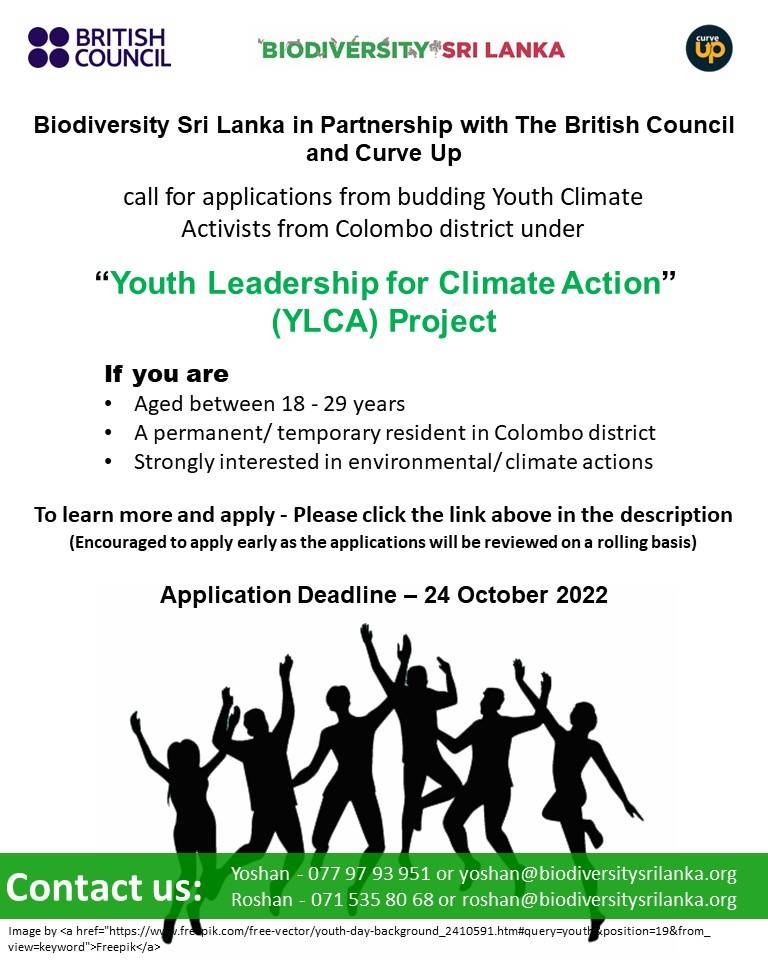
Call for applications from budding Youth Climate Activists from Colombo District under “Youth Leadership for Climate Action” (YLCA) Project
Biodiversity Sri Lanka in partnership with British Council and Curve Up
The Context
Biodiversity Sri Lanka is a national platform entirely owned and driven by the private sector established to promote strong engagement of the corporate sector in sustainable development. BSL’s overall mandate is to help raise awareness of biodiversity and sustainability issues amongst the Sri Lankan business community.
Curve Up is a pioneering education technology company in Sri Lanka. Curve Up works closely with several schools, global institutes, SMEs, and NGO communities to partner and develop solutions that are more innovative, adaptive, and effective.
The British Council has undertaken the Youth Leadership for Climate Action Project in Sri Lanka which intends to offer Sri Lankan youth active at community level climate action the opportunity to develop their knowledge, skills, and networks to offer better, more impactful, and sustainable solutions to pressing social, economic, and environmental climate-related issues through the engagement of local communities. Together, Biodiversity Sri Lanka and Curve Up carry out Colombo District’s project activities of the YLCA Project.
Opportunity for Youth
The project will run from October 2022 to March 2023, during which time the selected youth will undergo a series of intensive residential training programs on topics related to climate change, project management, and personality development. Upon completion of all the training sessions, youth are required to develop and implement a Community Action Project (individual or group) related to Climate Change within Colombo District in keeping with the project’s timeline.
Who may apply,
- Age between 18-29 years
- A permanent/ temporary resident of the Colombo district
- Available to take part in residential training (9 days of residential training in 3 segments) and subsequent community actions
- Strong interest and commitment for environmental/ climate action
- Should be able to carry out Community Intervention/ Action Project within Colombo District
- Ability to work effectively with people of diverse backgrounds, genders, ethnicities, and religions.
- Good communication skills in Sinhala or Tamil (English is not essential)
- Being a member of a community-based organization or a Youth Club is desirable
- This call is open and inclusive. All are encouraged to apply if you match the eligibility criteria given above etc.
To apply please visit the below link.
Sinhala: https://forms.gle/43E5BDEf7yQqDNcLA
English: https://forms.gle/YT92osUdb7Wmrgbe9
Tamil: https://forms.gle/hwUExaP7WArUL18eA
The applications will be reviewed on a rolling basis so we would recommend applying early. The deadline for submitting applications is 24 October 2022.
For any queries, please contact Yoshan at [email protected] or 0779793951 or Roshan at [email protected] or 0715358068
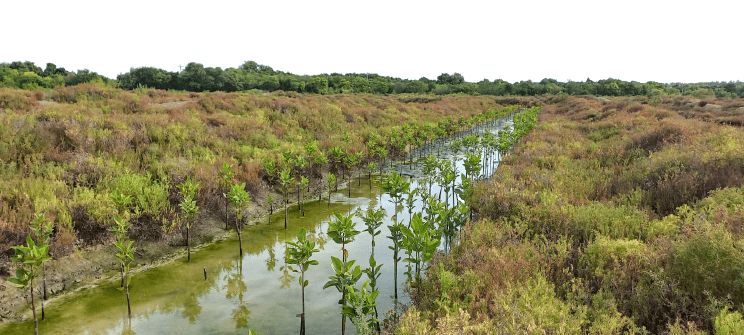
Life to Our Mangroves – latest developments
More about our flagship project being undertaken jointly with the Department of Wildlife Conservation (DWC), the Wayamba University of Sri Lanka, and selected private sector partners in the Anawilundawa Ramsar wetland sanctuary…
The selected patches have been severely degraded due to intensive shrimp farming projects that took place over a decade ago. The intention is to restore these mangrove patches using established scientific principles, to enhance ecological functions, habitat quality, species diversity, and capacity to provide biodiversity and ecosystem services that are in close approximation to what prevailed before it was converted to the present state.
Hydrology in mangrove restoration is often overlooked
Hydrology is often overlooked in mangrove restoration projects, making it an important reason for failure. One of the reasons that hydrology is often not taken into account is that it is not easy to quantify. To overcome the hydrological challenges of the site, the Department of Wildlife Conservation (DWC) made a request to Sri Lanka Navy (SLN) to undertake a comprehensive hydrological study for each plot. At the end of the study SLN developed contour maps for all plots, providing an analysis of the leveling in comparison with the Mean Sea Level. The contour map is helping to develop plans for irrigating the site, either by lagoon waters or waters from the Dutch Canal. Also, it will help in determining the types of species that could be planted in the different plots and understanding the hydrological patterns controlling the seedling establishment and successful growth of mangrove species.
Based on the SLN study engineers from the Department of Wildlife Conservation have mapped out points and designs to build culverts to obtain water for the plots from the Dutch Canal.
Project Field Coordinator – Dushan Samarasinghe
Maintaining genetic adaptation on-site
Proven studies provide information on the stage mangrove fruits become ready for harvesting. Community knowledge and experience are also taken into consideration in seed collection. The fruits or seeds will be
collected from the periphery of the area around the Dutch canal and sanctuary area with the help of community members, villagers, and fishermen. This is considered important, in terms of maintaining genetic adaptations on-site. Nurseries will be established by the propagation of collected fruits and seeds, and will be based on the lessons learned from the on-going pilot study;
The following species will be planted directly at the site:
- Rhizophora mucronata
- Rhizophora apiculata
- Bruguiera gymnorrhiza
- Bruguiera cylindrica
- Avicennia marina
- Avicennia officinalis
- Aegiceras corniculatum
The following species will be planted in nurseries:
- Xylocarpus granatum
- Lumnitzera racemosa
- Scyphiphora hydrophyllacea
- Nypa fruticans
- Heritiera littoralis
Since BSL’s plot 7 is located at the edge of the Dutch canal it is proposed to plant Rhizophora, Bruguiera, and Xylocorpus as the most preferred species. These species require adequate water availability to survive and grow. The landward plots will be restored with mixed species.
In addition to these, the Project is currently carrying out biodiversity surveys and soil analyses to establish baseline information for the Project.

Ceylon Chamber and Ministry of Environment Propose ‘Collect-Back’ Plastic Waste Management Model for the Private Sector
To tackle the escalating issue of Sri Lanka’s plastic waste management, the Ceylon Chamber of Commerce has initiated the implementation of an Extended Producer Responsibility (EPR) model, which requires all stakeholders generating plastic waste to take responsibility for recycling and minimizing the use of plastic packaging.
‘The Ministry of Environment will support and welcome all initiatives started by the private sector including the implementation of the Collect-Back Target model proposed by the Ceylon Chamber of Commerce. The Central Environmental Authority will closely monitor the progress of proposed mechanisms and complete the legal provisions required for meeting efficient outcomes from each method. The Ministry of Environment and the Central Environmental Authority reiterate the necessity of playing an active role by the private sector to adhere to the EPR principle with Best Available Technologies’, Secretary to the Ministry of Environment, Dr. Anil Jasinghe stated.
The Ceylon Chamber and Biodiversity Sri Lanka (BSL) with financial support from the United States Agency for International Development (USAID) developed the EPR Roadmap in 2021, to provide a strategic plan for plastic waste management in Sri Lanka. The implementation of the Mandatory Reporting and Collect-Back (MRCB) model was recommended under this EPR Roadmap. This EPR scheme based on MRCB model was developed under the guidance of a Project Steering Committee comprising of key Government Agencies including; Ministry of Environment, Central Environmental Authority (CEA), Marine Environment Protection Authority (MEPA), Coast Conservation & Coastal Resource Management Department (CC&CRMD), Western Province Waste Management Authority (WPWMA), State Ministry of Provincial Councils & Local Government Affairs, Colombo Municipal Council (CMC) and IUCN Sri Lanka as well as private sector representatives from beverage, water bottling and dairy sectors.
The MRCB model requires plastic users to declare their annual usage and pledge to collect back an agreed-upon percentage, targeted to reach close to 100% over a five-year period. The initiative aims to increase plastic waste collection and recycling in order to minimize plastic pollution. The proposed Collect-Back Target model has been endorsed by the Ministry of Environment (MoE) and the Central Environmental Authority (CEA), and welcomed by the private sector.
‘There is an urgent need for an integrated and collaborative approach within the plastic value chain in order to implement a sustainable framework, ensuring effective and effective plastic waste management. The Collect-Back Target model will help to promote greater accountability among corporates and ensure an efficient system of monitoring and evaluation’, said CEO and Secretary-General of the Ceylon Chamber of Commerce, Manjula de Silva.
At this event, Dr. Anil Jasinghe, Secretary to the Ministry of Environment launched the online reporting system, which was designed and developed by Virtusa Pvt Ltd., on which platform the private sector will commence reporting on waste collection and recycling.. The initial phase will focus on two types of plastics, namely, Polyethylene Terephthalate (PET) and High Impact Polystyrene (HIPS) packaging. The outcome of voluntary EPR implementation will be documented to draw lessons that can be applied to a mandatory collection and reporting system in the future.
The project is guided by a high-level multi-stakeholder Project Steering Committee, co-chaired by the MoE Secretary to the MoE and the Secretary-General of the CCC.

This Month we celebrated the International Day of Biological Diversity on the 22nd of May…
Sri Lanka supports unusually high biodiversity compared to any other moderate-sized tropical island. The hallmark of Sri Lanka’s biodiversity is signified by the presence of large populations of mega fauna (Asian elephant, leopard, sloth bear etc.,) that do not occur in other moderate sized islands, as well as the presence of a large proportion of endemic species (species that are naturally found only in Sri Lanka). Therefore Sri Lanka, along with the Western Ghats of India, is listed as one of the 34 biodiversity hotspots of the world. Designation of a biodiversity hotspot is based on two criteria, presence of 0.5% or 1500 species of vascular plants as endemics and reduction of forest cover by 70% or more causing many of the taxa to become threatened with extinction. Designation of Sri Lanka as a biodiversity hotspot is based on both of these criteria as there is a high level of endemicity in most taxonomic groups and a high proportion of the species in most taxonomic groups are threatened with extinction, especially in the case of endemic species, primarily due to loss of habitat.
Loss of biodiversity will lead to loss of goods and services provided by the biological resources as well as loss of resilience of natural ecosystems to withstand changes in the environment, especially the predicted changes that are brought about by climate change. This in turn will have a significant impact on human wellbeing and livelihoods such as agriculture and fisheries that directly depend on these ecosystem services. Further, Sri Lanka plans to expand its tourism industry which heavily depends on the natural capital whose loss will reduce the attractiveness of Sri Lanka as a tourism destination. Loss of biodiversity will also have an impact on future benefits that can be accrued from biological resources such as development of new drugs and improving crop varieties using emerging innovations of biotechnology.
In the universe are billions of galaxies,
In our galaxy are billions of planets,
But there is OnlyOneEarth.
Let’s take care of it.
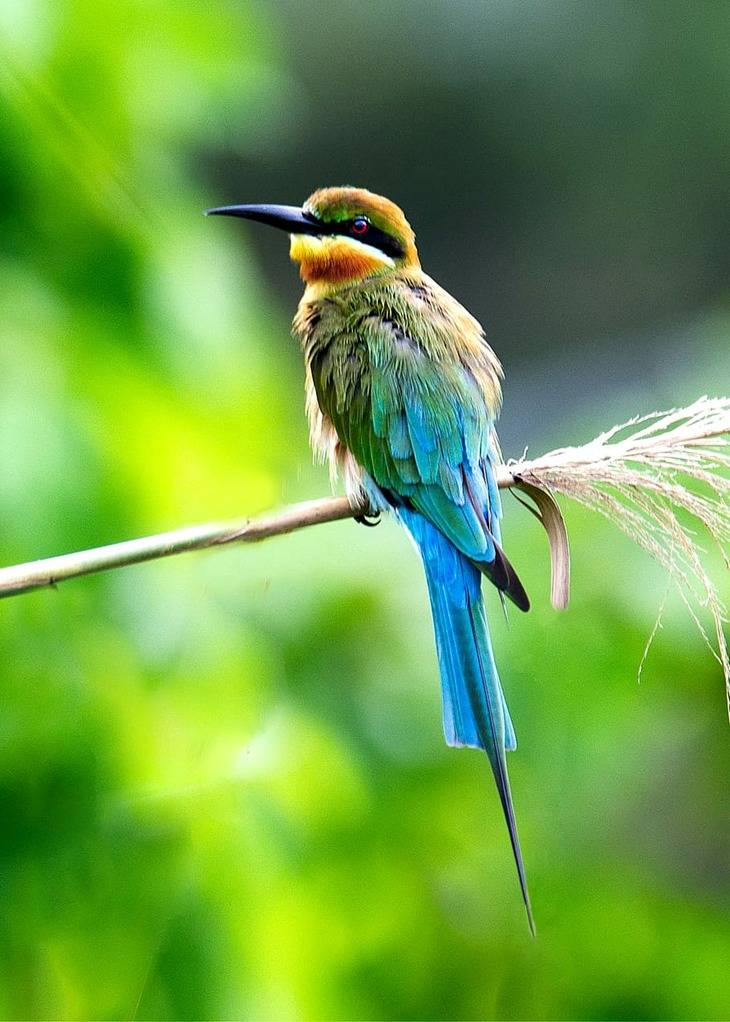
The mesmerizing migratory – Blue-Tailed Bee Eater (Merops phillippinus) නිල්පෙඳ බිඟුහරයා
World Migratory Bird Day was celebrated internationally on 14th May 2022. We celebrated with Mr Sarinda Unamboowe, well known wildlife enthusiast, bird photographer and former Director of BSL, talking to us about our feathered friends that fly to warmer climes for winter and then return home to breed. If you missed it, you can watch on:
https://fb.watch/c-94DFuBfw/
Every year, many bird species move thousands of kilometers. Migration is driven by the availability of food sources and more pleasant weather patterns. Places, where there is plenty of food and birds, may securely build nests. Flyways are the flying pathways that birds use during their annual migrations. A bird’s navigational ability is remarkable, while Scientists are not entirely sure how birds navigate their flyways.
Sri Lanka, a tropical island with various ecosystems, supplying yummy food for these tired travelers, making our country a favorite destination year-round stop for migrating birds.
While the number of migrants expected on our beaches is large, the arrival of the colorful and noticeable species marks the start of the “migration season.” Brightly colored bee-eaters are one of the most intriguing groups of birds among them. They may be found in most of the island’s national parks and bird sanctuaries. Their brightly colored feathers attract the attention of bird watchers.
The Little Green Bee Eater, Chestnut Headed Bee Eater, and Blue Tailed Bee Eater are the only three notable species of bee-eaters found in Sri Lanka.
The migratory Blue-tailed Bee Eaters are lovely to look at, with rich shades of blue and green, and gold on their plumage. They visit us from their breeding grounds in Southeast Asia. They don’t usually nest in trees. Instead, they build colonies on the sides of rivers or in open flat areas. They dig a long tunnel into which they lay approximately 5-7 white eggs.
They’re also known as the “Blue-cheeked Bee-eater” in various regions of the world. A thin blue patch with a black eye stripe and a yellow and brown throat are key distinguishing features on its face. The tail has a stunning iridescent blue color. It has two extended middle tail feathers and can grow to be 23-26 cm long. Both sexes are similar.
The majority of blue-tailed bee-eaters migrate, while small groups settle in the southeastern coastal area as permanent inhabitants. They inhabit the eastern shore of the island, from Bundala to Pottuvil. They may be seen in every corner of the island during the migratory season.
They are expert hunters. Bees, wasps, hornets, and dragonflies are among the insects they consume. Bird enthusiasts can enjoy seeing them demonstrating their aerial dexterity by snatching insects in mid-flight. Their magnificent aerial attacks provide wildlife photographers with a fantastic chance.
They detoxify wasps or bees before eating them. Surprisingly, this little bird can consume roughly 250 bees every day.
Sand bathing is something that bee-eater flocks do practically any day of the year. This is a necessary activity for bee-eaters, who appear to like the sensation of dust on their feathers. It is an attempt to clear their body of parasites.
As social creatures, they frequently appear in groups. Bee-eaters have a sophisticated social system. Many species show monogamy. The couples are highly attached and have been together for many years. Most bee-eater species share this remarkable habit known as courtship feeding. The male collects the prey and feeds his partner during courting.
Let’s ensure that we conserve our habitats so that these much-awaited visitors can enjoy our beautiful island!










